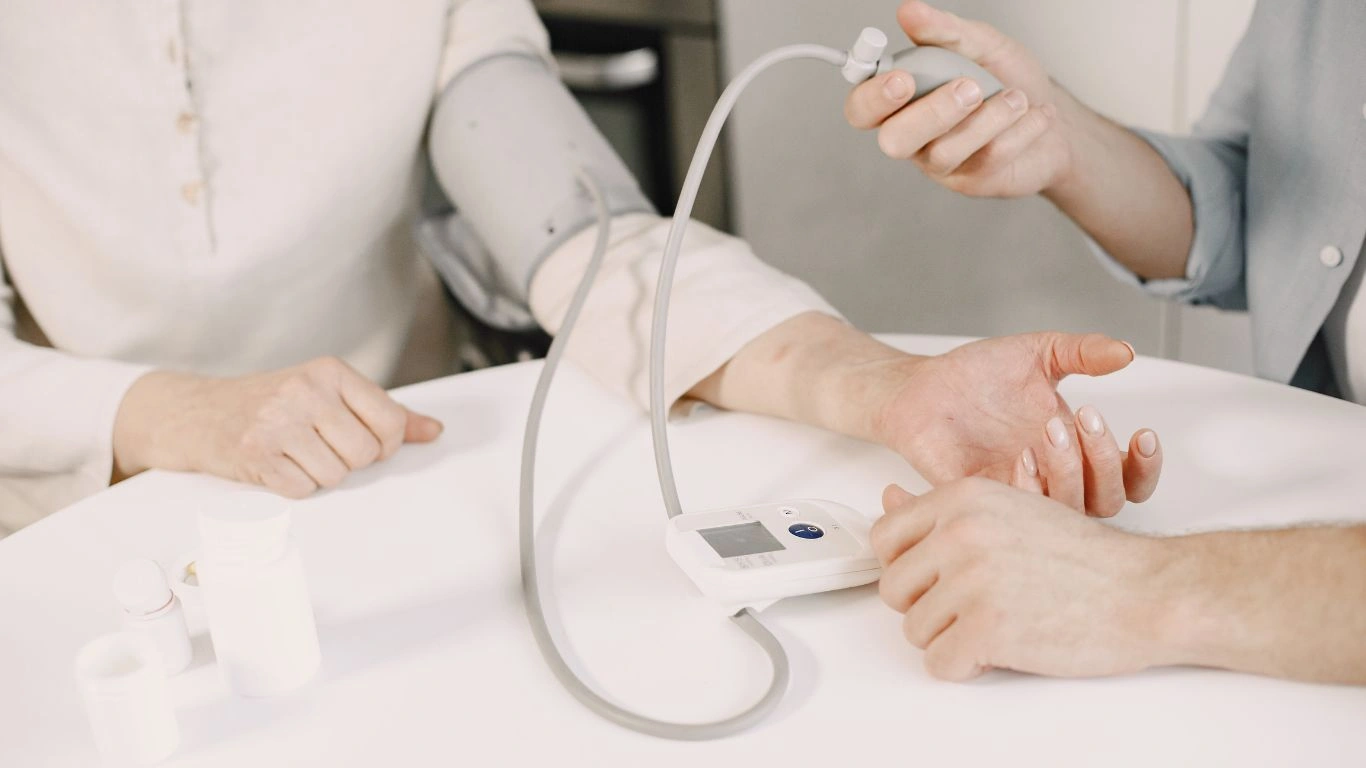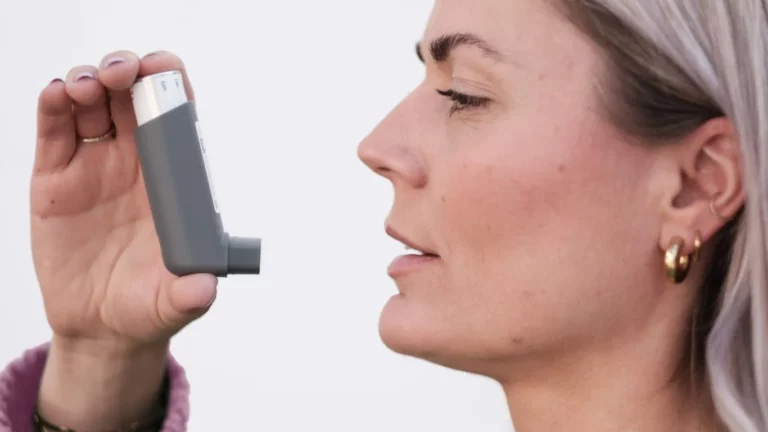How Long Car Rides Impact Hypertension and How to Prevent It
Long car rides are something we all enjoy, whether it’s for a weekend getaway or a long road trip. However, as fun as these trips can be, they can also have a surprising impact on your health, particularly if you suffer from hypertension. As someone who has spent years studying hypertension, its causes, and treatments, I can tell you that long periods of sitting, especially in cramped positions, can elevate your blood pressure in ways you might not expect. In this article, we’ll dive into how extended car rides affect your hypertension and offer practical advice to mitigate the risks.
The Connection Between Hypertension and Long Car Rides

It might surprise you to learn that something as simple as sitting for hours during a car ride can affect your blood pressure. Now, I’m sure you’re thinking, “How could sitting in a car possibly cause my blood pressure to rise?” Well, it’s not just about the sitting part—it’s about the entire experience. From the stress of navigating traffic to the lack of movement, long car rides can trigger a series of events that contribute to elevated blood pressure. As someone who’s seen firsthand how a sedentary lifestyle impacts hypertension, I can tell you that the long duration of sitting in a car, combined with the stress, can cause your blood pressure to spike in the short term and even contribute to more serious long-term effects if you’re not careful.
How Prolonged Sitting Affects Your Blood Pressure

We all know that sitting for too long is not ideal for our overall health, but it’s particularly problematic for those of us with hypertension. When you remain in a seated position for an extended period, your body doesn’t get the chance to circulate blood properly. This can put additional strain on your cardiovascular system and lead to increased blood pressure.
Let’s break down why this happens: First, when you sit still for hours, your blood flow slows down, which can increase the stiffness of your arteries. This is a big deal when you already have hypertension. The more rigid your arteries become, the more effort your heart has to exert to pump blood through them, and this causes your blood pressure to rise. So, while you might be enjoying the view from the car window, your body is under a silent strain that you may not even feel until it’s too late.
What Happens to Your Heart During Long Rides?
If you have hypertension, your heart works harder than it would in a person with normal blood pressure. That’s one of the reasons you need to be especially cautious about activities that can put extra stress on your cardiovascular system. Long car rides can increase that stress, even if you’re not physically exerting yourself. Your heart rate can increase simply due to the anxiety or stress that comes with long periods of immobility. Furthermore, if you’re someone who tends to get anxious during travel or deal with stress in high-traffic situations, your body can go into fight-or-flight mode. This leads to a temporary spike in blood pressure, which, over time, can contribute to long-term hypertension problems.
Tips for Managing Hypertension During Long Car Rides

Now that we understand how long car rides affect hypertension, it’s important to explore how you can manage your blood pressure while traveling. Luckily, there are simple strategies you can implement to minimize the risk of your blood pressure rising during a car ride. Below are a few tips I’ve gathered from both research and personal experience that can help you stay healthy on the road.
1. Take Frequent Breaks
If you’re heading out on a long trip, it’s essential to take regular breaks. I always advise people with hypertension to stop every 1-2 hours to stretch their legs and walk around. Even if you’re not driving, just getting out of the car for a few minutes can help restore proper blood circulation and reduce the negative effects of sitting. During these breaks, you can take a short walk, stretch your legs, or do some light exercise to get your heart pumping.
2. Stay Hydrated
Staying hydrated is another simple but effective strategy to help manage your hypertension during long car rides. When you’re dehydrated, your blood volume decreases, which can cause your heart to work harder. This can result in elevated blood pressure. So, keep a bottle of water handy, and make sure to sip on it regularly. I also suggest avoiding caffeinated drinks, as they can lead to dehydration and cause your blood pressure to spike.
3. Keep Stress Levels in Check
Stress can be a huge factor in raising your blood pressure, and long car rides, especially during peak travel times, can be a source of anxiety. Whether it’s traffic jams, navigating unfamiliar roads, or simply being stuck in a car for hours, stress can quickly take a toll on your health. To keep your blood pressure in check, practice deep breathing exercises or listen to calming music to keep your stress levels low. If you’re driving, consider using GPS systems that will help you navigate easily, reducing the stress of getting lost.
4. Wear Comfortable Clothing
It may sound silly, but wearing tight or uncomfortable clothing during long car rides can restrict blood flow and make your blood pressure worse. I always recommend wearing loose, breathable clothing, particularly around your waist, legs, and ankles, to keep blood circulating properly. This might not seem like a big deal, but these little changes can make a noticeable difference in how your body responds to long periods of sitting.
The Importance of Regular Movement During Long Car Rides

One of the easiest ways to prevent blood pressure spikes during long car rides is to incorporate regular movement into your routine. Sitting still for hours on end can cause blood flow to slow down, leading to that feeling of stiffness we all get after sitting too long. For someone managing hypertension, this is especially concerning because it can cause your blood pressure to rise.
When you’re driving or riding as a passenger, it’s easy to forget about the importance of movement, but taking the time to stretch or move around can have a big impact. Personally, I always try to take the opportunity to stretch my legs and do a few quick exercises during pit stops. If I’m driving, I also plan for quick stops to get out, breathe in fresh air, and shake off any tension. These little moments of movement can work wonders in keeping your blood pressure from creeping up.
Simple Exercises to Do on the Road
You don’t need a gym to keep your blood pressure in check on long car rides. Here are a few simple exercises you can do, even while sitting in the car:
- Leg lifts: While sitting, raise each leg alternately for a few seconds to promote blood flow in your lower limbs.
- Neck stretches: Gently tilt your head from side to side, holding each stretch for about 10 seconds to relieve any tension.
- Seated marches: While sitting, lift one knee toward your chest, then lower it and repeat with the other leg. This helps keep your circulation flowing.
- Shoulder rolls: Roll your shoulders forward and backward to relieve any built-up tension in your upper body.
Even doing just one or two of these simple exercises can help keep your blood pressure in check and prevent discomfort during long trips.
Managing Stress and Anxiety While Traveling

Stress and anxiety are major contributors to high blood pressure, and long car rides often bring about both. From navigating traffic to the general frustration of being stuck in a car for hours, it’s easy for your stress levels to rise. As someone who’s dealt with hypertension, I know that stress can be a silent yet significant factor that affects your health, even if you don’t realize it at the time.
To prevent stress from negatively impacting your hypertension, it’s essential to find ways to keep calm and centered during your car trip. Here are some of the strategies I use to keep my stress in check when I’m on the road:
1. Breathe Deeply
Breathing exercises are one of the quickest and most effective ways to calm your nervous system. When I’m feeling stressed behind the wheel, I make a point to practice deep breathing—inhale for 4 seconds, hold for 4 seconds, and exhale for 4 seconds. This technique helps activate the body’s relaxation response, reducing the impact of stress on your blood pressure.
2. Listen to Calming Music or Podcasts
If you’re like me, music can be a game-changer when it comes to reducing stress. Whether it’s classical music, nature sounds, or your favorite calming playlist, having soothing background sounds can help take your mind off the stressors of the road. Podcasts can also be a great way to keep your mind occupied, especially if they’re focused on relaxation or topics that interest you. Keeping your mind engaged in a positive way can help you remain calm, no matter how long the ride.
3. Avoid Caffeine
When you’re trying to manage your hypertension during a long drive, it’s essential to limit your intake of caffeine. I know it can be tempting to grab a coffee to stay awake or energized, but caffeine is a known stimulant that can cause your blood pressure to rise. If you need a pick-me-up during your trip, opt for herbal tea or simply stick with water to stay hydrated without triggering any blood pressure spikes.
Food and Hydration Tips for Long Car Rides

What you eat and drink during long car rides plays a crucial role in managing your blood pressure. Since our bodies are constantly working to keep everything in balance, fueling your body with the right nutrients is key to maintaining good health during extended trips. Having a proper diet while traveling can go a long way in reducing the negative effects of a sedentary trip.
1. Bring Healthy Snacks
Pack snacks that are low in sodium and high in potassium to help regulate your blood pressure. I always bring along a mix of nuts, fresh fruits like apples or bananas, and raw veggies like carrot sticks. These foods are rich in potassium and fiber, which can help balance your sodium levels and prevent blood pressure from rising. Avoid processed snacks like chips or sugary granola bars, as they tend to be high in salt and sugar—both of which can have a negative impact on your blood pressure.
2. Stay Hydrated with Water
Staying hydrated is especially important when managing hypertension. Dehydration can cause your blood pressure to drop and your heart to work harder to pump blood, leading to higher blood pressure levels. Throughout your trip, make sure to sip on water regularly. If you’re in need of a flavor boost, opt for unsweetened coconut water, which is rich in potassium and helps keep your electrolytes balanced. Avoid sugary drinks, as they can spike your blood sugar levels and negatively affect your heart health.
3. Avoid Excess Salt
Salt is a major contributor to hypertension, so it’s important to keep your sodium intake under control during long car rides. If you’re eating at rest stops or convenience stores, try to avoid anything that’s excessively salty, like fast food or pre-packaged meals. If you’re bringing food from home, be mindful of the salt content in your snacks and meals. Opt for low-sodium options whenever possible to help maintain a healthy blood pressure level throughout the journey.
Creating a Hypertension-Friendly Road Trip Plan

Planning ahead is always key when it comes to managing your hypertension, especially during long car rides. While spontaneity is fun, it’s important to take the time to prepare for your trip in a way that prioritizes your health. For those of us dealing with hypertension, this can make all the difference between enjoying a trip and feeling worn out or unwell. When I plan road trips, I always make sure to have a strategy in place to minimize the effects of sitting for long hours. Here’s how you can prepare for a stress-free and blood-pressure-friendly journey.
1. Plan for Breaks and Movement
Earlier, we talked about the importance of movement, but planning for breaks in advance is essential. If you’re someone with hypertension, you want to avoid long stretches of driving without a chance to move around. As part of my trip planning, I always look up rest stops along the route or even scenic locations to break up the trip. This way, I’m not only able to stretch my legs but also enjoy the environment, which helps lower my stress levels. I recommend setting an alarm or reminder to stop every couple of hours to walk around and stretch, especially if you’re the one behind the wheel.
2. Choose Your Travel Times Wisely
If you’re like me and prefer to avoid the stress of heavy traffic, choosing off-peak travel times is crucial. Nothing spikes my blood pressure more than being stuck in a traffic jam for hours! I always aim to travel early in the morning or later in the evening when traffic is lighter. This not only reduces stress but also gives me a smoother, more enjoyable drive. Planning your trip around these times can make a big difference in how you feel throughout the journey.
3. Know the Route and Anticipate Challenges
Another way to reduce stress and prevent hypertension from becoming an issue during a road trip is to familiarize yourself with the route beforehand. I’ve found that knowing where the roadblocks or traffic hotspots are can help me make alternative plans, such as taking a scenic route or using apps to reroute me if necessary. Getting lost or feeling uncertain can be frustrating and cause anxiety, which, as we’ve discussed, can lead to elevated blood pressure. So take a few minutes to map out your trip, check for any construction or road closures, and even make a backup plan just in case!
Managing Hypertension While Traveling for Business
Traveling for business can be especially taxing on your health, especially if your trips involve long hours in the car, meetings, and high-pressure situations. Many of my clients who have hypertension struggle with the stress of business travel. The constant change in time zones, long commutes, and the pressure to perform can make it even harder to stay on top of your health. However, the same principles of managing hypertension during road trips can be applied to business travel, and in many cases, they are even more critical.
1. Maintain a Healthy Routine
When I travel for business, I make it a point to stick to my normal routines as much as possible. Whether it’s eating at consistent times, getting in a morning stretch or walk, or even doing some light exercise during my breaks, these familiar actions keep me grounded. I find that maintaining some level of routine helps me stay in control of my blood pressure, even when I’m away from home.
2. Build in Time for Relaxation
One thing I’ve learned from experience is to never skip relaxation. Business trips are often jam-packed with back-to-back meetings, and it’s easy to forget about self-care. But in order to keep your blood pressure in check, it’s crucial to build in downtime. Whether it’s taking a few minutes to meditate, read a book, or simply enjoy the quiet of your hotel room, make sure to carve out some space to unwind. Stress can build up quickly on business trips, so keeping a balance is key to staying healthy.
3. Manage Your Expectations
Lastly, managing your expectations is a huge part of staying calm during business travel. I always remind myself that I can’t control everything, and sometimes things will go wrong—traffic, delays, or unforeseen obstacles. But rather than letting that affect my mood and blood pressure, I focus on staying positive and adapting to the situation. Keeping a mindset that helps you remain flexible can drastically reduce stress and prevent your blood pressure from spiking due to frustration.
References and Resources for Hypertension Management
If you’re looking to dive deeper into managing your hypertension during travel, there are some fantastic resources available that can provide more information and advice tailored to your specific needs:
- Healthline – A great resource for understanding the relationship between hypertension and stress, along with lifestyle changes to help manage your blood pressure.
- Centers for Disease Control and Prevention (CDC) – Offers valuable tips and statistics about managing hypertension, along with lifestyle modifications that can improve heart health.
- Mayo Clinic – Offers a comprehensive guide on managing hypertension, including dietary advice and exercises that can help control your blood pressure.
These sites have some excellent information and can offer more personalized guidance for managing hypertension, especially during travel. It’s always a good idea to consult with your healthcare provider before embarking on any extended travel, particularly if you have specific health concerns related to your blood pressure.
Disclaimer
The information provided in this article is for informational purposes only and should not be considered medical advice. Always consult with a healthcare professional before making any changes to your diet, exercise, or lifestyle, especially if you have hypertension or any other medical condition. The author is not responsible for any actions you take based on the content of this article.

Dr. Gwenna Aazee is a board-certified Internal Medicine Physician with a special focus on hypertension management, chronic disease prevention, and patient education. With years of experience in both clinical practice and medical writing, she’s passionate about turning evidence-based medicine into accessible, actionable advice. Through her work at Healthusias.com, Dr. Aazee empowers readers to take charge of their health with confidence and clarity. Off the clock, she enjoys deep dives into nutrition research, long walks with her rescue pup, and simplifying medical jargon one article at a time.






